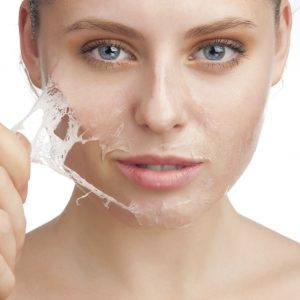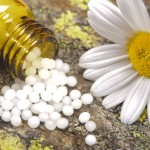 Dry skin can occur at any age, but it becomes more common ask you get older because the number of oil-boosting sebaceous glands becomes reduced, as does the skins ability to hold moisture. The amount of fat that the outer layer of skin, known as the epidermis, contains determines the skins ability to retain moisture and how well it protects the body. Genes can also play a role; if relatives suffer from dry skin, you are more likely to develop the condition. Dry skin can point to insufficiencies in your diet, particularly if you don’t drink enough water, how low intake of the essential fatty acids found in oils and fish, or have a vitamin A or B group deficiency. To counter this deficiency, try eating more red and yellow-coloured fruit and vegetables, plus whole grains and green leafy vegetables, all of which are good sources of vitamins A building blocks (such as cartonoids) and B group vitamins. Other triggers to dry skin include exposure to sunlight, cold weather, and central heating, and the over-use of harsh soaps and cleansing products, avoid those that contain alcohol, which is very drying. In extreme cases of dry skin, fish-like scaling of the skin can occur.
Dry skin can occur at any age, but it becomes more common ask you get older because the number of oil-boosting sebaceous glands becomes reduced, as does the skins ability to hold moisture. The amount of fat that the outer layer of skin, known as the epidermis, contains determines the skins ability to retain moisture and how well it protects the body. Genes can also play a role; if relatives suffer from dry skin, you are more likely to develop the condition. Dry skin can point to insufficiencies in your diet, particularly if you don’t drink enough water, how low intake of the essential fatty acids found in oils and fish, or have a vitamin A or B group deficiency. To counter this deficiency, try eating more red and yellow-coloured fruit and vegetables, plus whole grains and green leafy vegetables, all of which are good sources of vitamins A building blocks (such as cartonoids) and B group vitamins. Other triggers to dry skin include exposure to sunlight, cold weather, and central heating, and the over-use of harsh soaps and cleansing products, avoid those that contain alcohol, which is very drying. In extreme cases of dry skin, fish-like scaling of the skin can occur.
Diet: The oils in cold water fish such as salmon, herring, and mackerel are rich in omega-3 fatty acids.  Eating these types of fish at least twice a week can help replenish lost moisture in the skin. Two tbsp. of flax seed oil a day can also help replenish skin oils. Drinking 10, 8oz glasses of water a day will replenish some of the internal dryness of the body. Eliminate any foods you are allergic to. These foods may include wheat, dairy, corn, eggs, and soy.
Eating these types of fish at least twice a week can help replenish lost moisture in the skin. Two tbsp. of flax seed oil a day can also help replenish skin oils. Drinking 10, 8oz glasses of water a day will replenish some of the internal dryness of the body. Eliminate any foods you are allergic to. These foods may include wheat, dairy, corn, eggs, and soy.
Supplements: As mentioned above, fish oils contain fatty acids that have therapeutic functions. Take EPA/DHA daily. Vitamin A, taken each day also nourishes the skin. A good multivitamin/mineral is recommended to sustain overall healthy skin. Follow the instructions on the bottle. Vitamin E is also helpful in treating dry skin. Mix 4 oz. of jojoba oil or non-scented almond oil with 20 drops of rose oil and 20 drops of lavender (for their pleasant smell) with 10 drops of vitamin E. This mixture will moisturize the skin.
Homeopathy: Although dry skin can occur at any time of year, it can flare up even more during autumn and winter months. This results from 
constantly exposing skin to dry, centrally heated atmospheres and dry, cold winds. There are some simple measures that can be taken to keep your skin supple and well balanced throughout the colder months of the year.
Calendula: Calendula cream makes an excellent skin salve that soothes and moisturizes at the same time. Apply the cream to small dry, flaky patches on the face or body.
Calc carb: This is a good remedy for dry skin that is also pale, chilly, and sweats easily.
Natrum mur: If there is a noticeable tendency for dry, flaky patches of skin to develop around the mouth and the corners of the lips, use Natrum mur. This remedy is likely to be helpful where there’s a history of cold sores (often in response to over-exposure to sunlight), spots, and generally hypersensitive skin.
Graphites: For small patches of tight, flaky skin that develop into cracks during the cold months, Graphites is a helpful remedy. Sites that can be especially vulnerable include the exposed areas behind the ears, lips, and even fingertips.
TIP: USE A CREAM CLEANSER
Avoid washing your face with soap and water throughout the winter. Although this may clean your face, it will strip it of essential oils that help keep skin healthy and supple. Use a gentler cream cleanser, followed by an alcohol-free toning lotion. Or try using a wash-off cleanser that is designed to maintain the oil balance of the skin.








